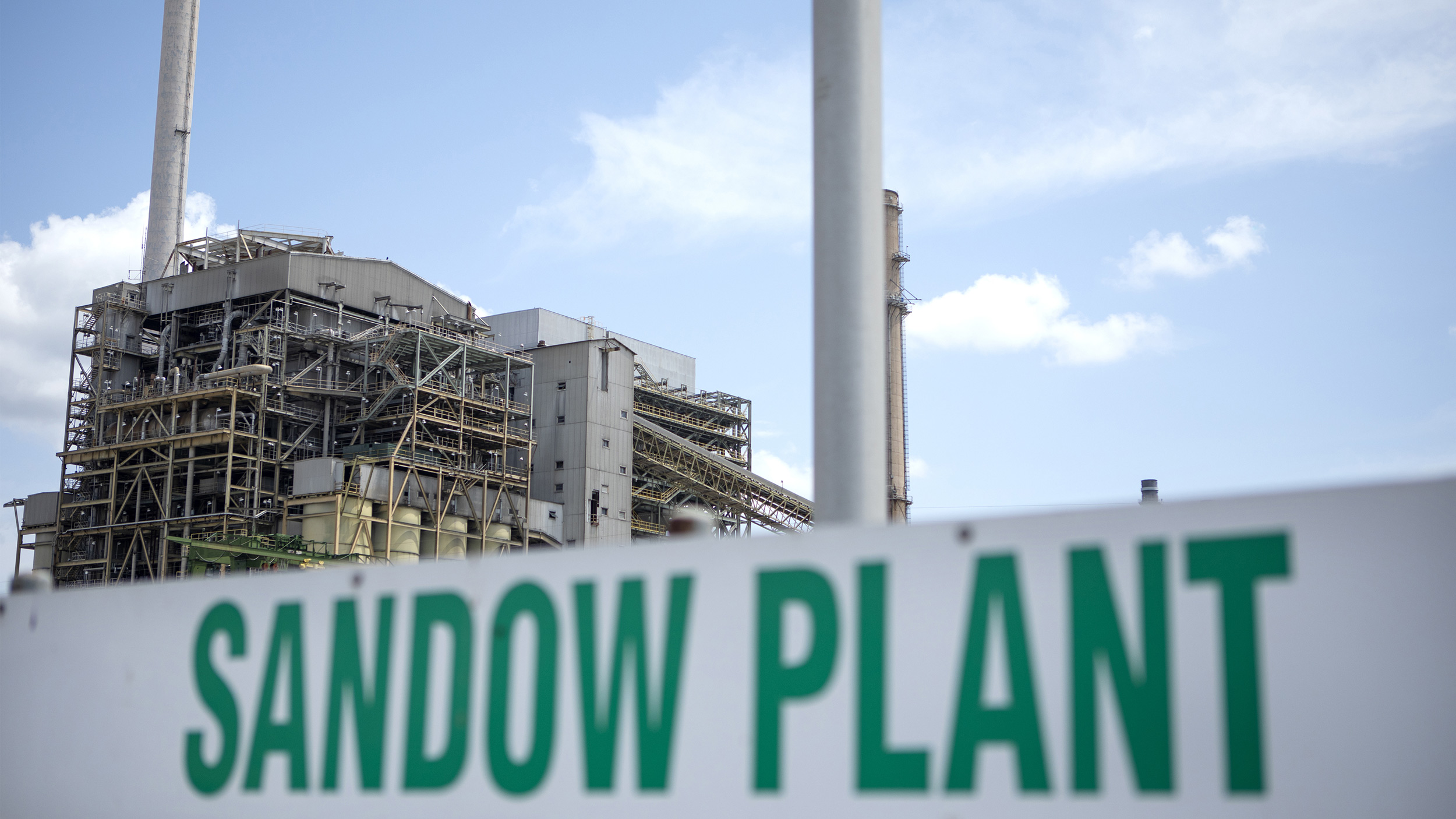It seems like everyone in Rockdale is talking about Sandow Lakes Ranch. That’s because so many residents of this old mining hub in Central Texas believe that the fate of the 32,000-acre tract is crucial to the future of their town.
For years, the ranch’s owner has been trying to sell the property, and for years, Rockdale residents have been buzzing about potential buyers, from a longshot bid for Amazon’s HQ2 to news that a Bitcoin-mining company might soon set up shop. Amazon, of course, didn’t pick Rockdale, and the Bitcoin company scaled back its plans.
For more than half a century, Rockdale was largely a company town, and as many as 2,000 people worked on that property, where a sprawling coal mine fed a power plant that in turn powered an energy-hungry aluminum smelter.
The mine and smelter were owned by Pittsburgh-based Alcoa, and the generations of Rockdale residents who worked there proudly called themselves Alcoans. At one point, the company accounted for 40 percent of the county’s tax base and 65 percent of the local school district’s budget.
But in 2008, after 56 years of operating in the town about an hour’s drive northeast of Austin, Alcoa dropped a bombshell: It would shutter the smelter that employed about 10 percent of the town’s population. Nine years later, cutthroat competition from natural gas and renewables led Luminant, the largest power producer in Texas, to close its coal-fired Sandow Power Plant and lay off another 450 people. By then, Alcoa had closed the coal mine, too, relying on lignite from the nearby Three Oaks mine.
[jumbo-content]

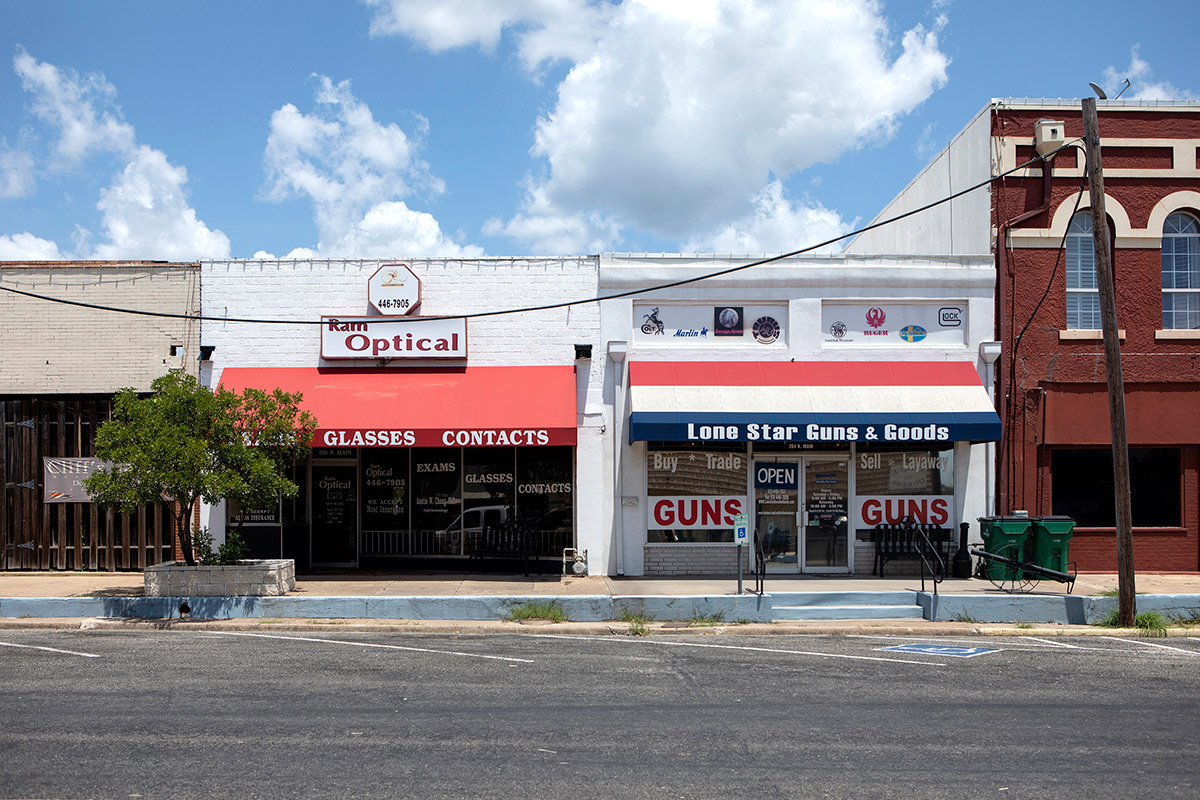
[/jumbo-content]
The town hasn’t recovered. School enrollment has dropped 17 percent over the last decade, and the proportion of economically disadvantaged students has increased from 53 percent to 68 percent. Bobby Dhaliwal, a Rockdale native who works at his family’s Shell gas station downtown, said business has fallen by half since Alcoa and Luminant halted operations.
“Everything is in transition,” he said. “And everyone is hoping for some new retail business.”
In 2016, Alcoa put the former coal mine and its adjoining industrial facilities on the market with a new name — Sandow Lakes Ranch — and a hefty price tag of $250 million.
In marketing the sprawling property, Dallas-based real estate company Icon Global describes it as a country paradise: “The natural beauty is protected and thrives with native flora and fauna, offering ample opportunities for the outdoor and recreational enthusiast.”
For at least the last two decades, the company has replaced thousands of tons of earth it had excavated to reach the coal seams, covered the land in clean soil, and planted grass and other vegetation. And the Railroad Commission of Texas, the state agency that oversees coal mining, has approved these remediation efforts.
“We release the site knowing it is in great shape for its next chapter in the story of Texas,” said Denny Kingsley, then head of the commission’s Surface Mining and Reclamation Division, in a September 2018 press release that hailed Alcoa’s work.
But a review of Railroad Commission records, as well as interviews with former agency employees, indicate the mine site may not be in the immaculate condition that the marketing materials describe. The description glosses over the fact that about 70 percent of the 32,000 acres were once part of a strip mine, where each year the company removed enough dirt and coal to fill the Panama Canal and buried coal ash containing toxic heavy metals under hundreds of acres. The “pristine lakes” on the property are man-made features that once collected acidic mine waste.
Any future buyer will also have to plan around a 169-acre landfill that sits in the middle of the property — an area that isn’t part of Sandow Lakes Ranch because it’s owned by Luminant.
The landfill has been primarily used to dispose of coal ash, a heavy-metal-laced byproduct of burning coal at the now-shuttered plant. In the months leading up to the Railroad Commission’s approval of Alcoa’s remediation plan, Luminant tested the groundwater around the landfill. An examination of those results by an environmental group called the Environmental Integrity Project indicated that the heavy metals from the coal ash had made their way into the groundwater. The analysis showed that concentrations of arsenic, mercury, cobalt, and lithium were well over the federal limits for human consumption and could present significant risk to public health.
Julia Kravchenko, a research scientist and physician at Duke University, said contaminants in coal ash can spread far from a storage site, especially during floods and severe storms. Those contaminants, she said, “can enter the food chain and the environment and persist for a really long time at really high concentrations.”
Surrounding the landfill, Alcoa restored nearly 3,000 acres of land for industrial or commercial use, a relatively lax standard that can save companies millions of dollars in remediation costs and doesn’t require the company to test the soil for heavy metals or other toxins commonly associated with coal. The Railroad Commission approved the reclamation plan.
Of the approximately two dozen coal mines in Texas, an analysis of public records by Grist and The Texas Tribune found that no company has received approval to restore as much land to industrial-commercial standards as Alcoa.
Jim Beck, a spokesperson for Alcoa, said that the company “completed all required reclamation work” for the Sandow mine and that the “rigorous process of reviewing and approving the reclamation results took place over many years.
“This was a very thorough process, which included oversight from the state government and notification to a host of federal agencies,” he said. “In every case, Alcoa met or exceeded standards for surface water, groundwater, soil, and re-vegetation.”

In 1999, local environmental activist Travis Brown founded a community group in Milam County to fight a now-shuttered industrial complex operated by Alcoa and Luminant. Miguel Gutierrez Jr. / The Texas Tribune
But Travis Brown, a longtime area resident and environmental activist who founded a community group to fight against Alcoa and Luminant, is not convinced. After all, he said, the Environmental Integrity Project’s analysis of Luminant’s own testing shows high levels of mercury and arsenic near the landfill that sits within the land Alcoa is selling.
“You wouldn’t want to drink or feed animals out of it,” Brown said of the property’s lakes, which once contained toxic metals. He added that the eventual buyer of Sandow Lakes Ranch will likely have to contend with major contamination: “God knows what’s buried out there.”
A questionable designation
The Surface Mining Control and Reclamation Act, the federal law that regulates restoration at mines sites, says that companies should aim to return land to its prior condition and purpose. In Texas, that’s primarily forest or pastureland.
But the law provides plenty of wiggle room. Companies can suggest alternatives if they can prove the land will actually be used for other purposes within a reasonable timeframe.
Securing industrial-commercial designation for land saves mining companies time in two ways: Less-intensive restoration can be completed faster, and the post-restoration monitoring period is shorter. Before mining, companies also have to set aside money for restoration in the form of bonds, and they can usually get that money back faster when the Railroad Commission approves land for industrial-commercial use.
“You can [satisfy] industrial-commercial land use just by laying rock on the surface and cover it with gravel if you want to,” said a former inspector, who requested anonymity for fear that speaking out would affect his current employment.
In Texas, an analysis of state records shows companies are increasingly asking the Railroad Commission for permission to do just that — even when there isn’t sufficient evidence the land will be used for industrial or commercial purposes. And the agency is increasingly granting those requests.
Since 1988, the Railroad Commission’s Surface Mining and Reclamation Division has approved I/C land use for about 6,800 acres, according to an analysis of public records by Grist and the Tribune. That’s still dwarfed by other land uses — about 34,000 acres of reclaimed mine property were turned into pastureland during the same time period — but the acreage approved for industrial-commercial use has more than doubled since 2010 to 440 acres per year.
“They would change land use to industrial and commercial when there was no [plan for] industry or commercial activity at all,” said the former inspector, who routinely worked with mining companies that pursued the designation.
“It’s kind of a loophole.”
Since 2002, which is as far back as state data provided to Grist and the Tribune goes, Alcoa has received permission to reclaim more acres to the industrial-commercial standard than any other company in the state — about 2,900 acres, or more than 25 percent of the 11,000 acres it sought to reclaim at the old Sandow mine. That’s much higher than the industry average of 10 percent.
Among the land it restored under the lower restoration standard is a 561-acre strip of land that contains a dusty gravel road and, until recently, a 20-mile-long conveyor belt that looked like a misplaced roller coaster track. Both were used to move thousands of tons of lignite from Luminant’s Three Oaks mine, south of the property, to its Sandow Power Plant. Dotted with clusters of trees, the strip, which hugs the edge of the mine site, is part of the 32,000 acres Alcoa is now trying to sell.
The Railroad Commission initially designated the strip for pastureland and fish and wildlife habitat — which would have required Alcoa to conduct soil testing to prove it wasn’t leaving behind acid-forming chemicals and to demonstrate the land could sustain vegetation for five years.
But in 2017, Alcoa petitioned the commission to change the land use to I/C, arguing that the presence of the haul road and the conveyor belt justified the change. If the agency agreed, Alcoa could skip the soil testing and would only have to plant enough grass to prevent soil erosion — without needing to prove that it would survive for at least five years.
According to the company’s estimates, switching the land-use designation would reduce its costs by between $330 to $525 per acre — a savings of at least $185,000 to $300,000.
But the technical specialist at the commission who was assigned to the case, Katherine Upham, didn’t buy Alcoa’s argument for the change.
“You reference ‘industrial activities’ in your letter, but that is too vague for a change to I/C,” she wrote in an August 2017 email to an Alcoa manager. “There are lots of areas that do not look like they would be used for I/C (e.g. the areas between the haul road and conveyor belt or the areas along the haul road).”
Upham asked for proof that the property would indeed be used for industrial and commercial purposes.
On October 10, 2017, Alcoa signed an agreement to lease the land to Luminant for “various industrial activities.” Three days later, Luminant announced it would shut down all operations at both the Sandow mine and power plant.
Nevertheless, Alcoa submitted a copy of the lease to the Railroad Commission about a month after Luminant’s announcement as evidence the land would continue to be used for industrial purposes. By then, several Texas newspapers and trade publications had covered the news of Luminant’s impending closures.
Still, the commission accepted Alcoa’s claim that the haul road and conveyor belt would continue to be used for industrial activities. Letters and documents related to the application, obtained through a public records request, do not show any further communications from Upham about the land-use change, and the agency ultimately approved the application in December 2017. Upham did not respond to multiple requests for an interview.
Beck, the Alcoa spokesperson, said the conveyor belt has been mostly dismantled and that the haul road is still being used to access the property. He said receiving permission to restore to industrial-commercial standards allowed the company to put the land on the market sooner for economic redevelopment. “However,” he added, “this did not impact the quality of the reclamation.”
Beck said that the standard did not save the company money because although it changed the land use on paper, in reality Alcoa decided to mostly restore the land for agricultural use. The land is healthy enough that farmers have been harvesting hay on the property, he said — and, as a result, the company did not reduce its reclamation costs despite receiving industrial-commercial designation.
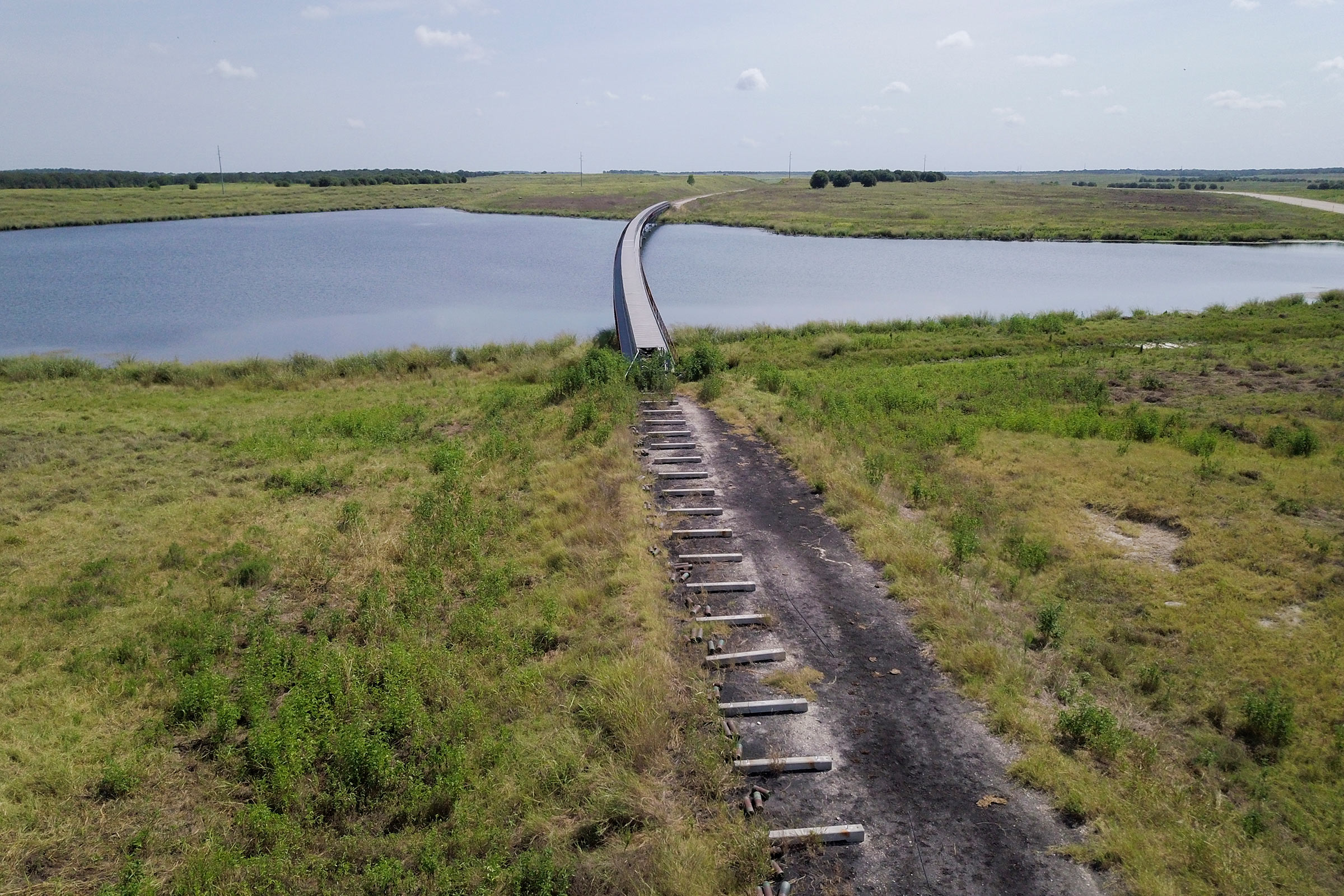
Alcoa says it has mostly dismantled a decommissioned conveyor belt near Rockdale used to move lignite from a mine to a coal-fired power plant. Miguel Gutierrez Jr. / The Texas Tribune
Joe Pizarchik, the head of the federal Office of Surface Mining Reclamation and Enforcement during the Obama administration, reviewed Alcoa’s application at the request of Grist and the Tribune. He found that the company didn’t provide sufficient evidence to justify the land-use change.
Federal regulations state the company must show that it’s reasonably likely that the land will be used for industrial-commercial purposes. “They never identified the use,” Pizarchik said. “So, if you do not identify the use, it is not possible to demonstrate that there is a reasonable likelihood.”
Lisa Evans, an attorney with the nonprofit environmental law firm Earthjustice, put it more plainly: She called Aloca’s reasoning “an excuse instead of legal justification.”
A leaky landfill
Alcoa purchased the Sandow mine and built a smelter and the Sandow coal plant in Rockdale in the early 1950s. Ever since, the company has been in a never-ending battle to find ways to dispose of the waste generated by the smelter and power plant. It has buried carbon dust, created when coal is crushed, on about 10 acres south of the smelter, and molten slag from the coal boiler on another 120 acres. It distributed the fine ash left behind after burning coal — the largest category of waste produced — over a handful of landfills and pits across more than 650 acres.
And those are the sites Alcoa knows about. Many disposal sites are so old that in records submitted to state agencies, the company said, “The exact extent of the legacy waste mine works old disposal sites are unknown.”
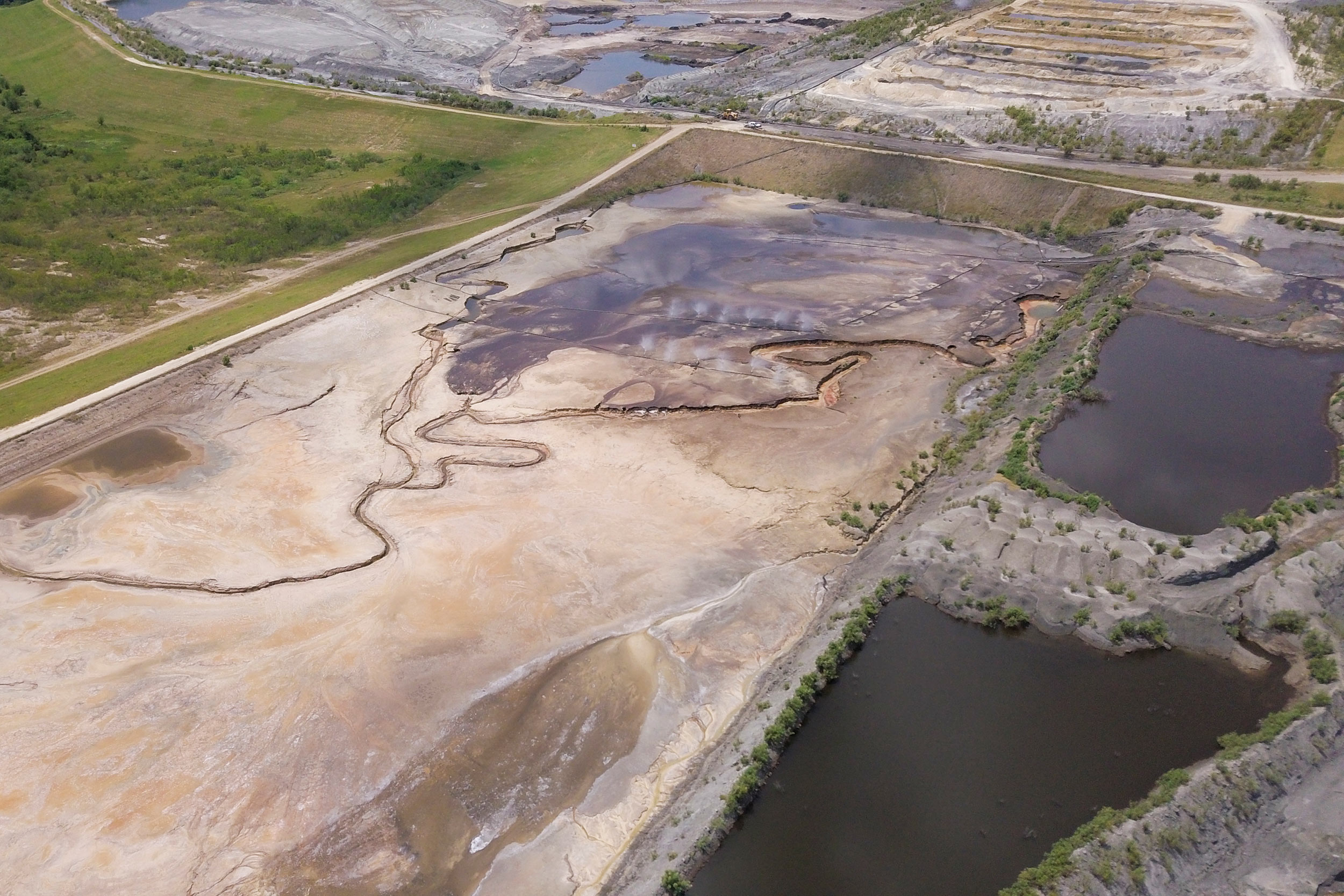
Over half a century of mining at Alcoa’s now-shuttered Sandow lignite mine, the company has buried coal ash containing toxins on hundreds of acres. It is now trying to sell most of the land for $250 million. Miguel Gutierrez Jr. / The Texas Tribune
To create yet another coal ash disposal site in 2013, Luminant, which had taken an ownership stake in the Sandow coal plant, built the 169-acre landfill on land leased from Alcoa. While Luminant owned the landfill, the land underneath still belonged to Alcoa. So Alcoa was responsible for restoring the site to the satisfaction of the Railroad Commission.
The landfill sits within the 2,900 acres Alcoa restored for industrial-commercial use. A former Railroad Commission inspector familiar with the Sandow mine said that because the landfill was approved for industrial-commercial use, the agency only required inspectors to check if the slopes of the landfill were stable. It didn’t require collection of soil samples to test for toxic materials.
But testing has found that groundwater around the landfill has been contaminated. After the EPA finalized its 2015 rule governing coal ash disposal, power providers were required to make their groundwater monitoring data publicly available. Last year, Luminant’s tests of 10 wells around the landfill showed that heavy metals from the site have already leached into the ground and contaminated groundwater in the area.
[jumbo-content]
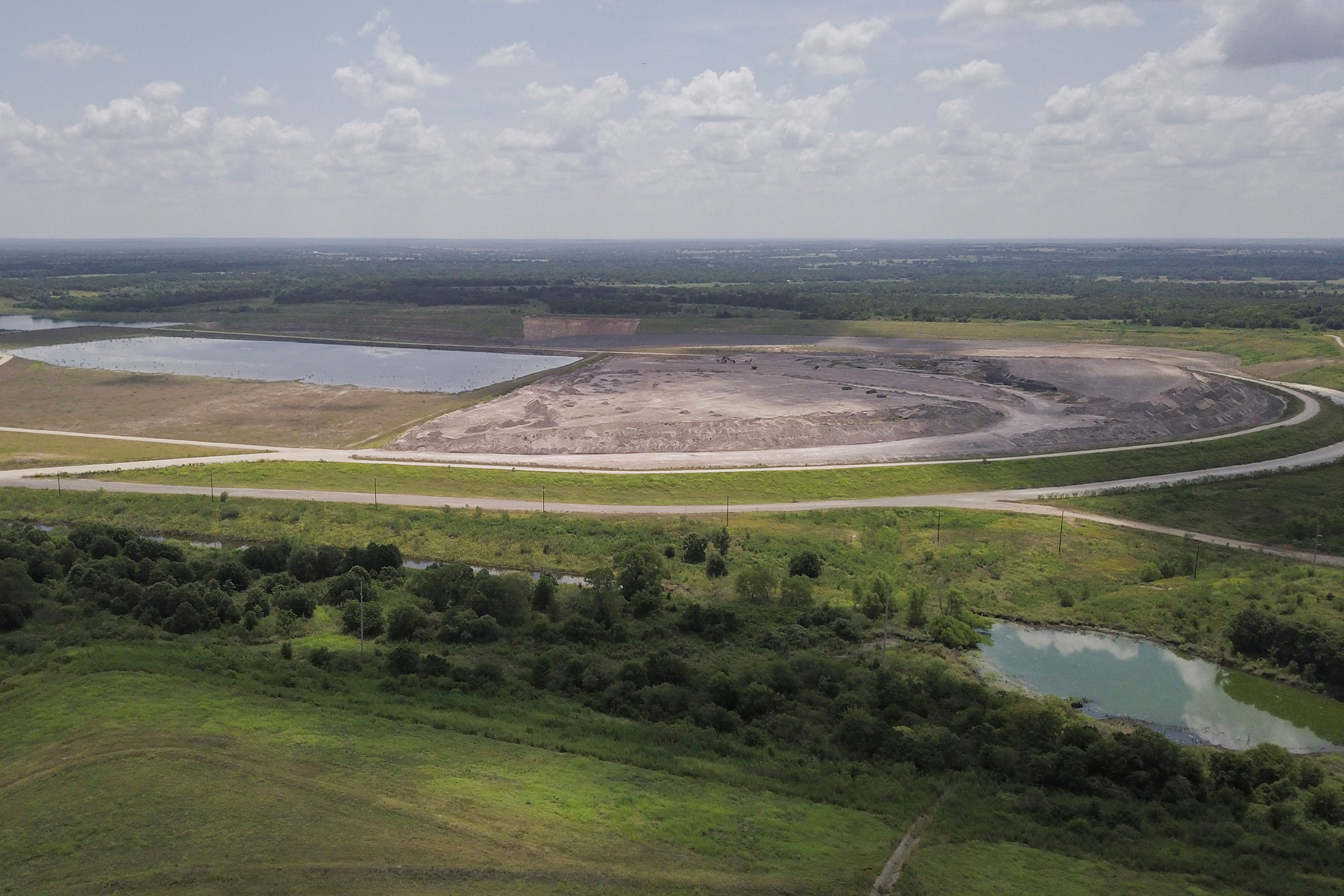
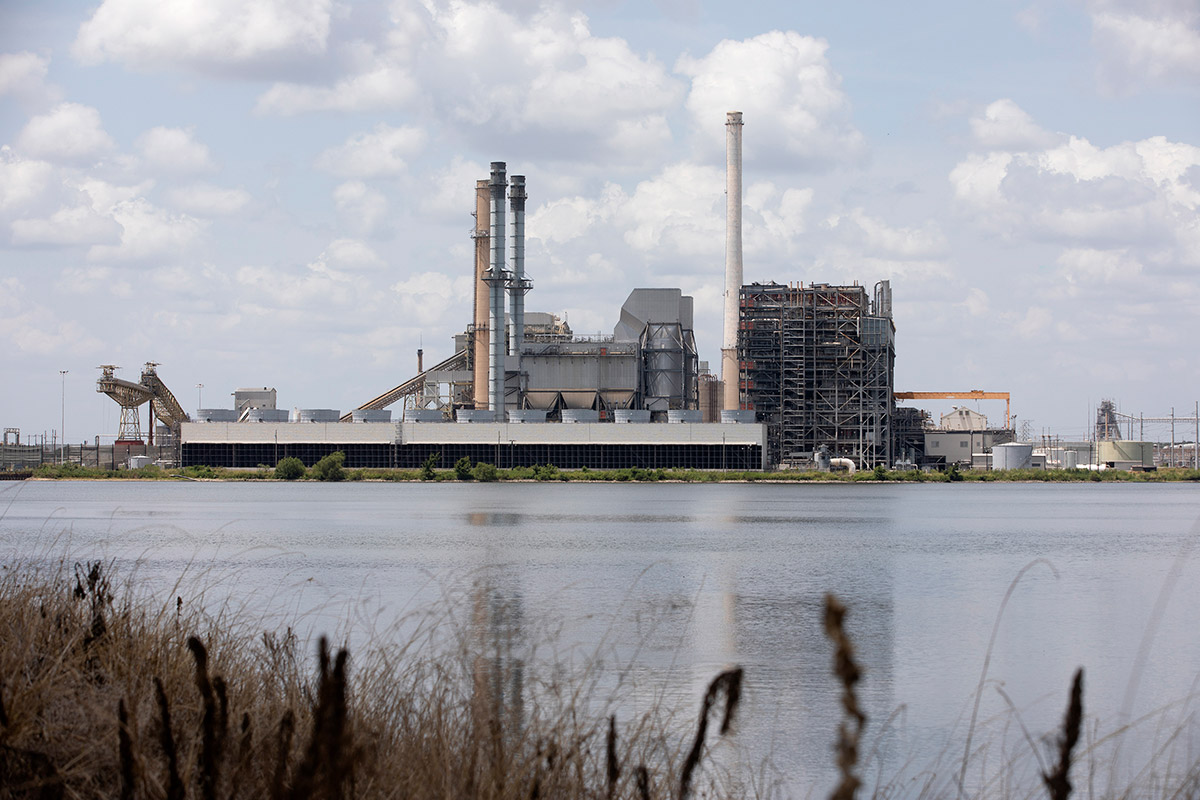
[/jumbo-content]
The testing data is available on Luminant’s website. An analysis of those results by the Environmental Integrity Project — a Washington, D.C.-based nonprofit of former EPA employees — concluded that the groundwater contains concentrations of arsenic, mercury, cobalt, and lithium that are 25 times the federal limit for human consumption.
Coal ash has four to 10 times the concentration of toxins as coal, and research has found that people living close to coal ash impoundments and landfills have a higher risk of premature death. They are more likely to suffer from a slew of respiratory and cardiovascular diseases, including pneumonia, lung cancer, and heart attacks.
“There is always risk of contamination from storing coal ash,” said Kravchenko, the Duke University researcher. “For health, it’s much more toxic than just burning coal at power plants.”
Kravchenko has been tracking health issues in communities near active and closed coal plants in North Carolina and found that public health impacts continue even after coal plants have shut down because of the coal ash left behind.
At mining sites, “there’s lead, there’s mercury, there’s arsenic, there’s chromium, and [these] toxic heavy metals are known to impact the nervous system,” said Karen Hadden, executive director of the Sustainable Energy and Economic Development Coalition and a board member of the Texas chapter of the Physicians for Social Responsibility. “They can affect the developing brains of children and cause permanent brain damage.”
Beck, the Alcoa spokesperson, directed questions about the landfill to Luminant, which purchased the landfill property from Alcoa in June 2018. He noted that the groundwater around the landfill is not connected to the main aquifer under Alcoa property and that Alcoa’s testing of groundwater on its property didn’t show contamination. “The water quality is appropriate for the property that is being marketed,” he said.
Meranda Cohn, a spokesperson for Luminant, criticized the Environmental Integrity Project’s analysis, calling it “misleading” and not “considered statistically valid.” She said the landfill is in compliance with all groundwater protection standards.
The groundwater in the two-county region that includes the Sandow mine is managed by the Post Oak Savannah Groundwater Conservation District, located about 10 miles down the road from Rockdale in Milano. Gary Westbrook, the district’s manager, said it had not done its own testing at the former mine site because it has no regulatory authority, but is “keeping the public apprised” and posting information about coal ash on its website.
Westbrook said he has had meetings with the Texas Commission on Environmental Quality, the state environmental agency responsible for regulating coal plants and coal ash. A spokesperson for the agency said it plans to propose state rules for coal ash disposal next month and said that once the rules have been finalized, it “will take appropriate actions to monitor compliance at the 17 coal plants located in Texas, including pursuing enforcement for documented violations of the rule requirements.”
Hope springs eternal
Meanwhile, the residents of Rockdale continue holding out hope that Sandow Lakes Ranch finally attracts new businesses.
When Amazon was soliciting proposals for its second headquarters last year, Rockdale and Milam County pitched the Alcoa property as a potential location with “boundless opportunities.” The pitch — as with more than 200 other proposals — lost out to Northern Virginia and New York City.
The Lower Colorado River Authority and Brazos River Authority, two powerful water districts in Central Texas, also showed interest in recent years, seemingly lured by the water rights that came with the land. Both decided against bids for the property.
Last year, Bitmain, a Japanese company that mines the cryptocurrency Bitcoin, announced plans to turn Alcoa’s former smelter into the world’s largest Bitcoin-producing facility. But after the value of the cryptocurrency plummeted by half late last year, Bitmain delayed its planned $500 million investment and started a leaner operation just last month. It now estimates it will create 50 jobs instead of the original 400 to 600 it forecast.
Lanna Caldwell, 62, owns an antique shop downtown and has lived most of her life in Rockdale. Both her husband and father spent much of their careers working at the Alcoa smelter. She said local officials keep telling residents that something good and big is coming. She’s heard that one buyer has plans to build a large business, “almost like a mall,” on the site.
“It sure sounds promising if they would do something like that that would bring people into our town,” she said. “Something for the economy would be great.”
But Dhaliwal, the gas station owner, seemed glum about the prospects for a revival in Rockdale.
“The town seems to be cursed with optimism,” he said. “They always hope something is going to come through.”
This story is a collaboration between Grist and The Texas Tribune, a nonprofit, nonpartisan media organization that informs Texans — and engages with them — about public policy, politics, government, and statewide issues. Learn more at texastribune.org

